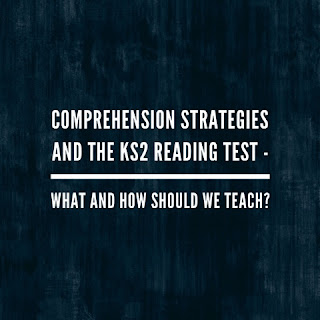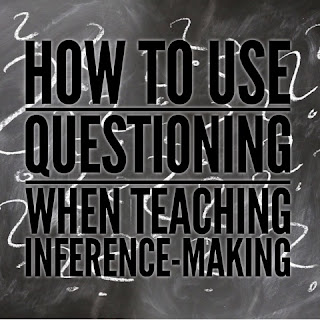These lessons, although not fully-formed (I didn’t want to dictate everything), are a good representation of how I think teachers should model the use of reading strategies and skills in a lesson and how children can be given practice of using the same strategies and skills that their teachers have modelled. The lessons involve both opportunities for oral and written comprehension activities; the written activity can just as well be worked on orally, although it is designed so that children can work on it independently by giving written answers.
Some of the lessons you will see here were based on versions of Aesop's Fables written by Michael Morpurgo and illustrated by Emma Chichester Clark, published by Orchard Books. Although the book hadn't been chosen with inference-making in mind, it was serendipitous that there were plenty of opportunities to focus a few lessons on that particular skill. Hopefully these examples will show that, even whilst having a focus on a particular strategy or skill, other strategies and skills might be used in support whilst developing the skill which is the focus of the lesson (in this case inference-making).
For each lesson I outlined the L.O. (based on the National Curriculum POS for year 3/4 in this instance) and some introductory questions and items for discussion:
I then suggested some exemplar questions for the teacher to model which focus on the lesson's L.O.:
All of the above could be done as a whole class reading lesson, or as a guided group. The point of all of the above is to have discussions about the text and to orally develop strategies such as clarifying (what do the words mean?) and inferencing (why do the characters do what they do?). The intention is that children will then be better prepared to have a go at some similar questions themselves without the teacher having already answered them by way of demonstration.
In this particular example the questions are focused around multiple choice answers with the hope that children will consider each option in order to decide whether or not it is good evidence for the character's motives. Notice that not all the questions are inference questions; other questions are asked which might support the child's understanding so that they are able to make the more difficult inferences (see my blog posts on scaffolding for more information on this idea).
For more information on the symbols/colours use in this example, please read the following: http://www.thatboycanteach.co.uk/2016/12/reading-roles-cognitive-domains-made.html
This part of the lesson could be done as an independent written activity or as part of a guided group. The multiple choice questions should spark some good discussion about why the correct one is correct and about the reasons children have for selecting their answers. If this was being completed as an independent written task there is the potential for a follow-up written task asking children to give their reasons for their selection.
Following this, and in order to practice another strategy, I suggested the following:
The following lesson follows a similar structure:
You can download these resources on my website - they are editable so even if you don't have the book, you can use the activities as a template: https://www.aidansevers.com/product-page/inference-question-examples-and-templates
You can download these resources on my website - they are editable so even if you don't have the book, you can use the activities as a template: https://www.aidansevers.com/product-page/inference-question-examples-and-templates
If you would like Aidan to work with you on developing reading at your school, please visit his website at https://www.aidansevers.com/services and get in touch via the contact details that can be found there.
These two lessons represent the first two in a potential sequence where children might move beyond being given multiple choice options. In another sequence of lessons based on David Almond's 'My Dad's A Birdman' children moved onto giving spoken and written answers to inference questions (which throughout the sequence all focused on characters' actions only). To begin with they answered questions with a structure that had been provided and modelled to them, as exemplified in the teacher notes:
They then answered their own questions. Again, this could be done independently, collaboratively or as part of a guided group with a teacher:
The children spent two lessons practising this before being shown how to further add to their answer, as demonstrated in the teacher notes:
The children then practised using this addition to the answer structure (although they only practised one as this was a chance for teachers to assess children's attempts at what is quite an advanced skill for year 3 children):
In the sequence of lessons on My Dad's a Birdman children spent 5 sessions focusing just on making inferences about character's actions followed by another 5 sessions focusing on making inferences about characters' feelings. For more on why there was such a sustained focus please read my blog post entitled 'Reading Comprehension: A Structured Way Of Teaching Inference-Making'. Along the way the children also exercised other reading comprehension strategies and skills in order to support their inference making and general understanding of the text. They also spent time just reading the book and enjoying - teachers and children alike kept telling me how much they loved the book. The fact that they had spent time completing such activities as outlined above enabled them to enjoy the book, rather than spoiling their enjoyment of it.
See my blog post entitled 'Giving the Gift of Reading: Activities That Promote Reading for Pleasure' for more on this.These two lessons represent the first two in a potential sequence where children might move beyond being given multiple choice options. In another sequence of lessons based on David Almond's 'My Dad's A Birdman' children moved onto giving spoken and written answers to inference questions (which throughout the sequence all focused on characters' actions only). To begin with they answered questions with a structure that had been provided and modelled to them, as exemplified in the teacher notes:
They then answered their own questions. Again, this could be done independently, collaboratively or as part of a guided group with a teacher:
The children spent two lessons practising this before being shown how to further add to their answer, as demonstrated in the teacher notes:
The children then practised using this addition to the answer structure (although they only practised one as this was a chance for teachers to assess children's attempts at what is quite an advanced skill for year 3 children):
In the sequence of lessons on My Dad's a Birdman children spent 5 sessions focusing just on making inferences about character's actions followed by another 5 sessions focusing on making inferences about characters' feelings. For more on why there was such a sustained focus please read my blog post entitled 'Reading Comprehension: A Structured Way Of Teaching Inference-Making'. Along the way the children also exercised other reading comprehension strategies and skills in order to support their inference making and general understanding of the text. They also spent time just reading the book and enjoying - teachers and children alike kept telling me how much they loved the book. The fact that they had spent time completing such activities as outlined above enabled them to enjoy the book, rather than spoiling their enjoyment of it.
You can download these resources on my website - they are also editable so even if you don't have the book, you can use the activities as a template: https://www.aidansevers.com/product-page/inference-question-examples-and-templates
If you would like Aidan to work with you on developing reading at your school, please visit his website at https://www.aidansevers.com/services and get in touch via the contact details that can be found there.
Further reading from my blog on teaching reading in primary schools:
Teaching Reading: A Simple Approach
Reading Roles: Elements Of The Content Domain Made Memorable
Reading Roles PLUS: Teaching Metacognitive Reading Comprehension Strategies (not exemplified in this blog post)
Questions To Ask When Teaching Inference-Making
Should We Teach Reading Strategies In Isolation Or In Combination?






























